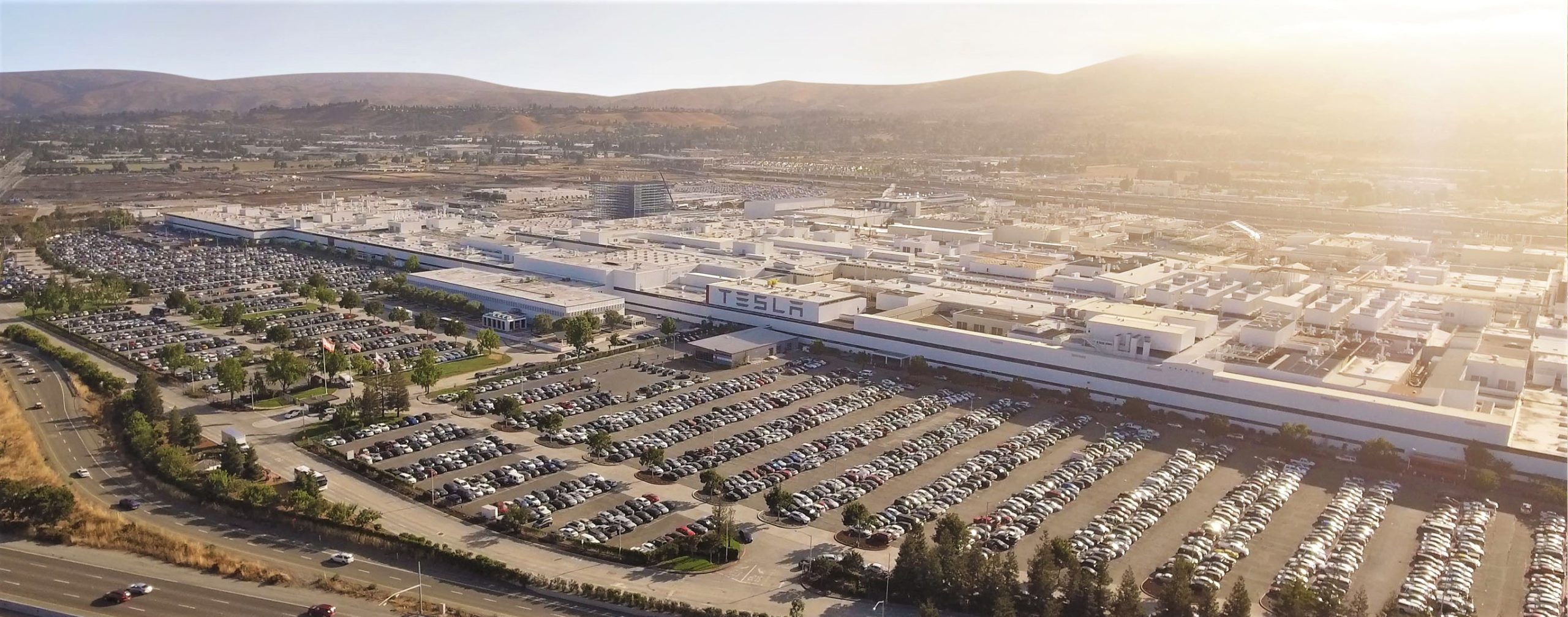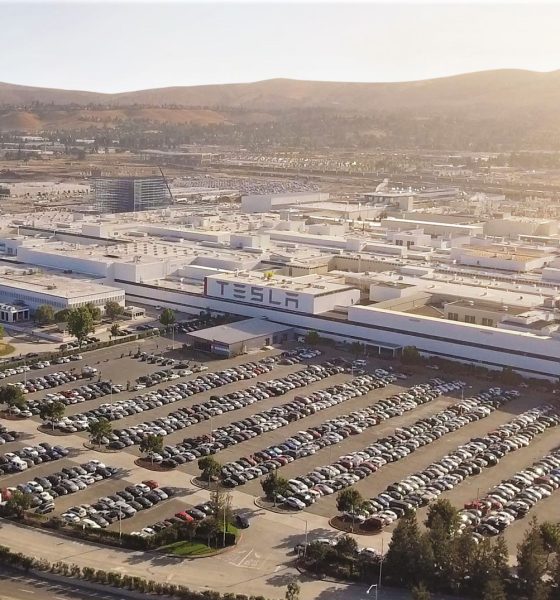

Investor's Corner
Tesla shares show resilience amid longtime TSLA bull’s more conservative outlook
Tesla stock (NASDAQ:TSLA) is proving quite resilient on Thursday morning, maintaining its gains despite the release of a more conservative outlook from one of the company’s most notable bulls. In a recent note, Baird analyst Ben Kallo, who has long held a bullish outlook on the company, adopted a more conservative price target and earnings per share estimate on Tesla.
In a note, Kallo lowered his price target for TSLA stock from $465 to $400, which is more conservative but still about 25% above FactSet’s average of $318 per share. The Baird analyst explained that Tesla’s lower-than-expected first-quarter deliveries proved insufficient to change the negative sentiments against the company today. “We were wrong. Disappointing first-quarter deliveries were not sufficient to improve what we believed was overly negative sentiment,” he wrote.
Apart from his more conservative $400 per share price target, Kallo also adjusted his earnings per share estimates for 2019 and 2020 to $1.82 and $6.92, respectively, from $3.67 and $12.15. These new estimates are closer to current Wall Street consensus. Yet, despite his more cautious stance in the near-term, Kallo maintained that his long-term expectations for Tesla remain optimistic. The Baird analyst noted that Tesla is still poised to be a “major disruptor,” though it might take some time before sentiments for the company improve.
“We continue to view Tesla as a major disrupter and think new product introductions, production ramps, and further development of innovative technologies will drive growth. While we acknowledge it may take time for sentiment to improve, over time we think shares will move higher as the company executes on its growth strategy,” Kallo wrote.
Tesla stock has been weighed down by the results of its Q1 2019 vehicle delivery and production report, which saw electric car deliveries fall by around 30% compared to Q4 2018. Production in the first quarter was also around 12% lower than the previous quarter’s figures, with the company producing a total of 77,100 vehicles. These figures, together with continuing questions about the demand for the company’s electric cars, have resulted in a notable slide for TSLA stock this month.
Some of these reservations will hopefully be addressed this coming April 24, when Tesla is expected to hold its first-quarter earnings call. Elon Musk has proven conservative about Tesla’s chances in Q1, stating during the introduction of the Standard Model 3 that he does not expect the company to be profitable in the first quarter. “Given that there is a lot happening in Q1, and we are taking a lot of one time charges, there are a lot of challenges getting cars to China and Europe, we do not expect to be profitable. We do think that profitability in Q2 is likely,” Musk said.
As of writing, Tesla stock is trading (+0.62%) at $272.92 per share.
Disclosure: I have no ownership in shares of TSLA and have no plans to initiate any positions within 72 hours.

Investor's Corner
Tesla stock closes at all-time high on heels of Robotaxi progress

Tesla stock (NASDAQ: TSLA) closed at an all-time high on Tuesday, jumping over 3 percent during the day and finishing at $489.88.
The price beats the previous record close, which was $479.86.
Shares have had a crazy year, dipping more than 40 percent from the start of the year. The stock then started to recover once again around late April, when its price started to climb back up from the low $200 level.
This week, Tesla started to climb toward its highest levels ever, as it was revealed on Sunday that the company was testing driverless Robotaxis in Austin. The spike in value pushed the company’s valuation to $1.63 trillion.
Tesla Robotaxi goes driverless as Musk confirms Safety Monitor removal testing
It is the seventh-most valuable company on the market currently, trailing Nvidia, Apple, Alphabet (Google), Microsoft, Amazon, and Meta.
Shares closed up $14.57 today, up over 3 percent.
The stock has gone through a lot this year, as previously mentioned. Shares tumbled in Q1 due to CEO Elon Musk’s involvement with the Department of Government Efficiency (DOGE), which pulled his attention away from his companies and left a major overhang on their valuations.
However, things started to rebound halfway through the year, and as the government started to phase out the $7,500 tax credit, demand spiked as consumers tried to take advantage of it.
Q3 deliveries were the highest in company history, and Tesla responded to the loss of the tax credit with the launch of the Model 3 and Model Y Standard.
Additionally, analysts have announced high expectations this week for the company on Wall Street as Robotaxi continues to be the focus. With autonomy within Tesla’s sights, things are moving in the direction of Robotaxi being a major catalyst for growth on the Street in the coming year.
Elon Musk
Tesla needs to come through on this one Robotaxi metric, analyst says
“We think the key focus from here will be how fast Tesla can scale driverless operations (including if Tesla’s approach to software/hardware allows it to scale significantly faster than competitors, as the company has argued), and on profitability.”

Tesla needs to come through on this one Robotaxi metric, Mark Delaney of Goldman Sachs says.
Tesla is in the process of rolling out its Robotaxi platform to areas outside of Austin and the California Bay Area. It has plans to launch in five additional cities, including Houston, Dallas, Miami, Las Vegas, and Phoenix.
However, the company’s expansion is not what the focus needs to be, according to Delaney. It’s the speed of deployment.
The analyst said:
“We think the key focus from here will be how fast Tesla can scale driverless operations (including if Tesla’s approach to software/hardware allows it to scale significantly faster than competitors, as the company has argued), and on profitability.”
Profitability will come as the Robotaxi fleet expands. Making that money will be dependent on when Tesla can initiate rides in more areas, giving more customers access to the program.
There are some additional things that the company needs to make happen ahead of the major Robotaxi expansion, one of those things is launching driverless rides in Austin, the first city in which it launched the program.
This week, Tesla started testing driverless Robotaxi rides in Austin, as two different Model Y units were spotted with no occupants, a huge step in the company’s plans for the ride-sharing platform.
Tesla Robotaxi goes driverless as Musk confirms Safety Monitor removal testing
CEO Elon Musk has been hoping to remove Safety Monitors from Robotaxis in Austin for several months, first mentioning the plan to have them out by the end of 2025 in September. He confirmed on Sunday that Tesla had officially removed vehicle occupants and started testing truly unsupervised rides.
Although Safety Monitors in Austin have been sitting in the passenger’s seat, they have still had the ability to override things in case of an emergency. After all, the ultimate goal was safety and avoiding any accidents or injuries.
Goldman Sachs reiterated its ‘Neutral’ rating and its $400 price target. Delaney said, “Tesla is making progress with its autonomous technology,” and recent developments make it evident that this is true.
Investor's Corner
Tesla gets bold Robotaxi prediction from Wall Street firm
Last week, Andrew Percoco took over Tesla analysis for Morgan Stanley from Adam Jonas, who covered the stock for years. Percoco seems to be less optimistic and bullish on Tesla shares, while still being fair and balanced in his analysis.

Tesla (NASDAQ: TSLA) received a bold Robotaxi prediction from Morgan Stanley, which anticipates a dramatic increase in the size of the company’s autonomous ride-hailing suite in the coming years.
Last week, Andrew Percoco took over Tesla analysis for Morgan Stanley from Adam Jonas, who covered the stock for years. Percoco seems to be less optimistic and bullish on Tesla shares, while still being fair and balanced in his analysis.
Percoco dug into the Robotaxi fleet and its expansion in the coming years in his latest note, released on Tuesday. The firm expects Tesla to increase the Robotaxi fleet size to 1,000 vehicles in 2026. However, that’s small-scale compared to what they expect from Tesla in a decade.
Tesla expands Robotaxi app access once again, this time on a global scale
By 2035, Morgan Stanley believes there will be one million Robotaxis on the road across multiple cities, a major jump and a considerable fleet size. We assume this means the fleet of vehicles Tesla will operate internally, and not including passenger-owned vehicles that could be added through software updates.
He also listed three specific catalysts that investors should pay attention to, as these will represent the company being on track to achieve its Robotaxi dreams:
- Opening Robotaxi to the public without a Safety Monitor. Timing is unclear, but it appears that Tesla is getting closer by the day.
- Improvement in safety metrics without the Safety Monitor. Tesla’s ability to improve its safety metrics as it scales miles driven without the Safety Monitor is imperative as it looks to scale in new states and cities in 2026.
- Cybercab start of production, targeted for April 2026. Tesla’s Cybercab is a purpose-built vehicle (no steering wheel or pedals, only two seats) that is expected to be produced through its state-of-the-art unboxed manufacturing process, offering further cost reductions and thus accelerating adoption over time.
Robotaxi stands to be one of Tesla’s most significant revenue contributors, especially as the company plans to continue expanding its ride-hailing service across the world in the coming years.
Its current deployment strategy is controlled and conservative to avoid any drastic and potentially program-ruining incidents.
So far, the program, which is active in Austin and the California Bay Area, has been widely successful.








